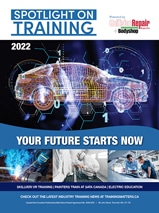Trust, Vehicle Quality & Service Practicality Critical to Success of Automated Taxis
BOSTON–(BUSINESS WIRE)–Consumer attitudes toward automated mobility services have significant hurdles to clear. Beyond trust, many other factors crucial to the UX of future AV concepts, such as vehicle quality and service practicality must be addressed. A new report from the In-Vehicle UX (IVX) group at Strategy Analytics has investigated consumer interest in completely automated taxis or limited-route shuttles. Even if the trust ‘issue’ can be resolved through marketing campaigns and mere exposure, the limitations of current robo-taxi and shuttle pilots (in terms of geographic footprint, top speed, and drop-off/pick-up points) add to consumers’ hesitance toward automated mobility services.
Surveying consumers in the US, Western Europe, and China via web-survey, key report findings include:
- Consumers in the West are extraordinarily skeptical of robo-taxi services given recent difficulties and negative media focus in the space; while consumers in China are more optimistic and forward-leaning.
- Regardless of the service model – point-to-point ride-sharing or limited-route transport – no more than one fifth of any region showed “extreme” interest in any self-driving mobility service.
- Consumers in the US continue to show the strongest hesitation, with around one third showing no interest at all in any automated mobility service.
- Skeptical consumers continue to cite trust, cost, quality, and practicality as primary concerns for automated taxis and busses.
Derek Viita, Senior Analyst and report author commented, “Interest in China remains modest, as the development of automated mobility services is still nascent and optimism remains high. But in Western markets, where on-road testing is prominent and developers gain media attention through crashes and lawsuits, the traveling public is more skeptical.”
Continued Viita, “Unsurprisingly, interest in robo-taxis tends to fall strictly within the segments that are more accepting of technological advances. In China, all ages fit this bill to some extent, but in the West, this limits viability to mid-aged and younger segments.”
Added Chris Schreiner, Director, Syndicated Research UXIP, “In order for robo-taxi concepts to advance in the West, an effort must be made to cater toward the wide swaths of Early/Late Majorities who are showing no interest in such a service. Cost, vehicle quality, and practicality of the service must all be addressed.”
About Strategy Analytics
Strategy Analytics, Inc. provides the competitive edge with advisory services, consulting and actionable market intelligence for emerging technology, mobile and wireless, digital consumer and automotive electronics companies. With offices in North America, Europe and Asia, Strategy Analytics delivers insights for enterprise success. www.StrategyAnalytics.com.
About In-vehicle UX
Our In-vehicle User Experience (IVX) service investigates UX innovation opportunities in the connected vehicle. By understanding the emerging behaviors, needs, motivations, use cases, pain-points and “must-have” experiences of lead adopters and future target consumers, IVX delivers a roadmap to help you design the optimal experience. IVX forms part of the User Experience Innovation Practice (UXIP) at Strategy Analytics. Through both syndicated and proprietary user-centric research capabilities, UXIP delivers strategic insights and analysis on how to optimize the user experience of new and emerging technologies. Click here for more information.
Contacts
US Contact: Derek Viita, +1 617 614 0772, dviita@strategyanalytics.com
European Contact: Diane O’Neill, +44(0) 1908 423 669, doneill@strategyanalytics.com





















